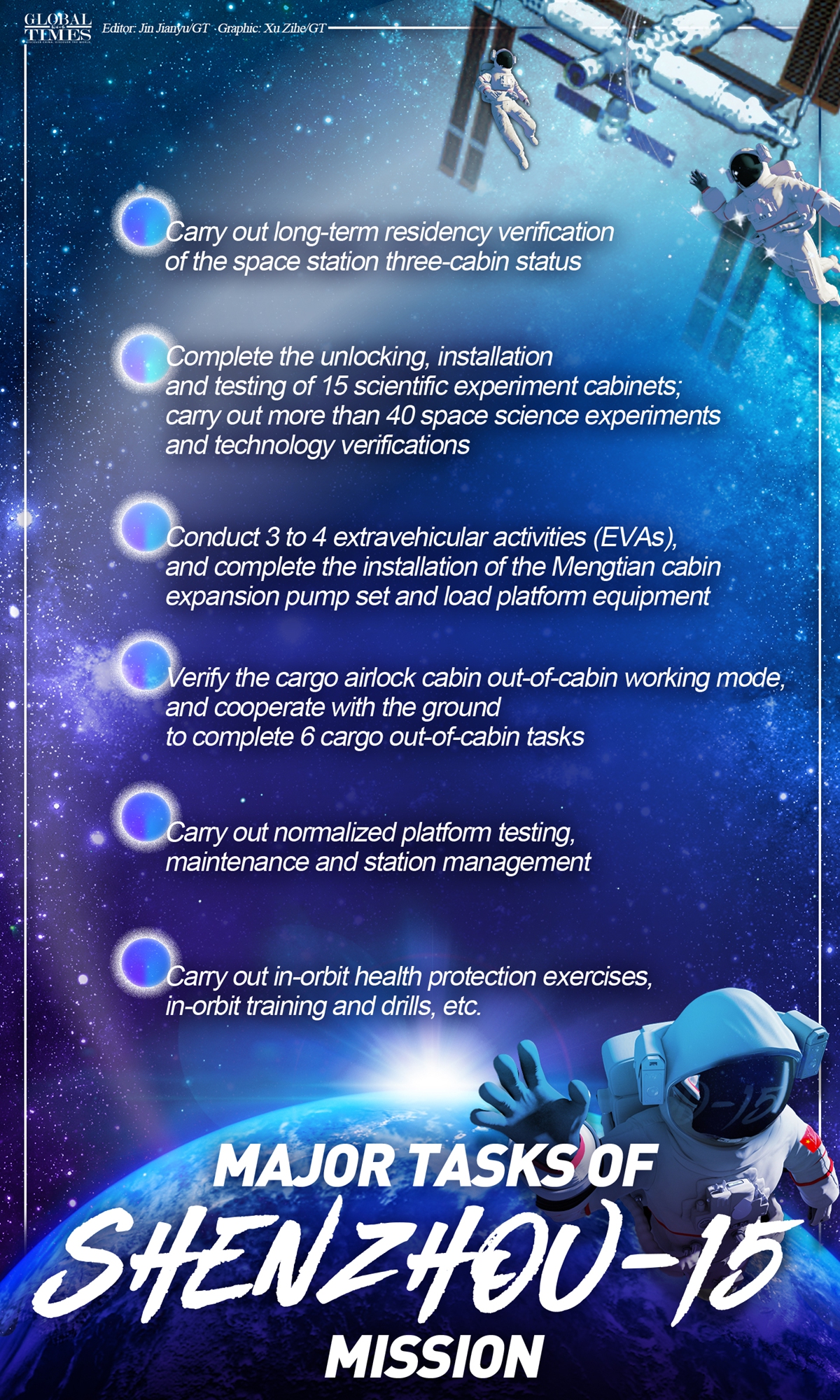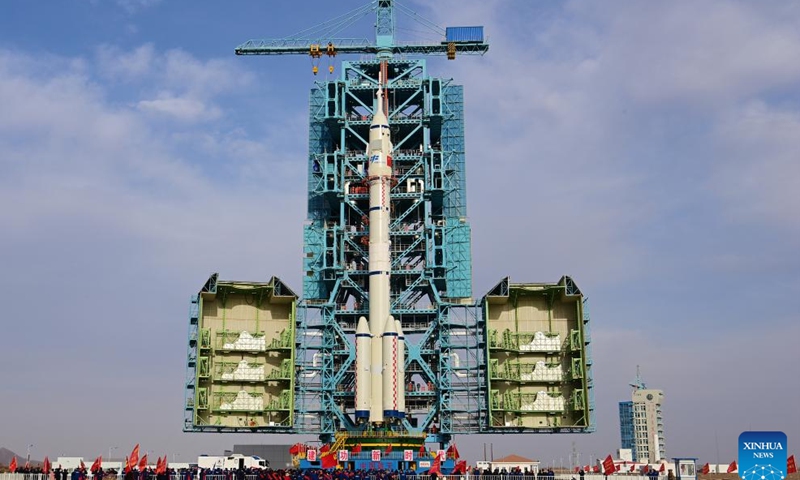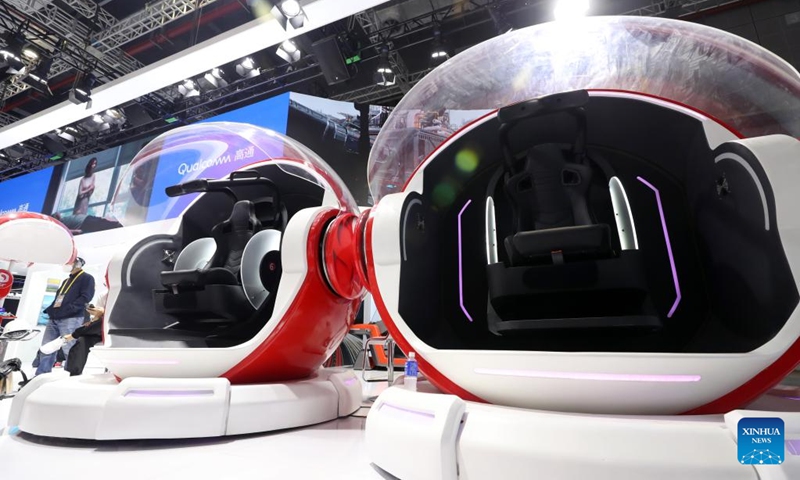 A Long March-7 carrier rocket lifts off from Wenchang Satellite Launch Center, south China's Hainan Province, June 25, 2016. [Photo: Xinhua/Li Gang]
A Long March-7 carrier rocket lifts off from Wenchang Satellite Launch Center, south China's Hainan Province, June 25, 2016. [Photo: Xinhua/Li Gang]
Insight: Successful rocket launch gets China one step closer to own space station
WENCHANG, Hainan, June 25 (Xinhua) -- China on Saturday successfully blasted off its new generation carrier rocket Long March-7 from Wenchang space launch center in south China's Hainan province.
In a cloud of white smoke, the rocket ascended against the dark sky, trailing a vast column of flame. Space fans in specially set up viewing areas erupted with applause.
Minutes later, Zhang Youxia, commander-in-chief of China's manned space program, declared the launch a success.
The rocket's payload separated from the rocket 603 seconds after blast-off, and entered an oval orbit with a low point, or perigee, of 200 kilometers, and a high point, or apogee, of 394 kilometers.
The launch is the first by the Wenchang site, and the 230th of China's Long March carrier rocket family.
Its mission is to verify the design and performance of the new carrier rocket, to evaluate mission execution capacity of the Wenchang launch site, and to check coordination and compatibility of project-related systems.
NEW CARRIER
The Long March-7 is a medium-sized, two-stage rocket that can carry up to 13.5 tonnes to low-Earth orbit (LEO).
Earlier reports said the rocket now uses kerosene and liquid oxygen as fuel, rather than the highly toxic propellant, making it more environmental friendly and less expensive.
Experts forecast that the 53.1-meter-long, 597-tonne rocket will become the main carrier for China's future space missions.
Its 13.5-tonne LEO payload capacity means it can carry 1.5 times as much as the country's current launch vehicles.
"The more our rockets can lift, the farther we can venture into space," said Ma Zhonghui, chief designer for the rocket.
"Long March-7's successful maiden flight will greatly lift up China's comprehensive space capacity, and give the country a hefty boost in building itself into a space power," he said.
In many senses, the blast-off of the Long March-7 is of key importance to China's space programs, deemed by many a source of surging national pride and a marker of its global stature and technical expertise.
The rocket's payload includes a scaled-down version of "a reentry module of a multi-function spacecraft," said Wu Ping, a deputy director with China's manned space program.
Wu said the 2,600-kg re-entry module is expected to return to Earth on Sunday afternoon, some 20 hours after the Long March-7 launch.
It is expected to land in a desert in China's Inner Mongolia Autonomous Region, close to the Jiuquan Satellite Launch Center.
Data collected from the re-entry experiment will help with future research on a new generation manned spacecraft, Wu said.
WHAT'S ABOARD
Also onboard the Long March-7 rocket are an "Aolong-1" space debris clearer, two "Tiange" data relay spacecraft, a CubeSat designed to study Earth's gravitational field and space radiation, and a space refueling device that could be used to resupply satellites and space stations to extend their operating life spans.
After being separated from the Long March-7, they will be carried into different orbits onboard an upgraded "space shuttle bus" Yuanzheng-1A, tasked to send these spacecraft in the next 48 hours using its own power system.
Saturday's launch also marks a key step towards China's plan to eventually operate a permanent space station in the final step of the country's three-phase manned space program.
The country launched its first manned spaceflight in 2003, and blasted off its first space lab Tiangong-1 in 2011.
The next and final step will be to assemble and operate a 60-tonne space station around 2022.
To do that, Chinese engineers have planned four space launches within ten months till April next year, of which the Long March-7 mission is the first.
A second mission in late September will put the Tiangong-2 space lab into orbit, and the third one will see the Shenzhou-11 spacecraft, which will carry two Taikonauts, dock with Tiangong-2 in October.
In April 2017, the country's first cargo ship Tianzhou-1, which literally means "heavenly vessel," will be sent to dock with Tiangong-2 in the final mission.
NEW LAUNCH SITE
Wenchang will be the main launch site for future space station missions, including the launch of Tianzhou-1.
Completed in 2014, the Wenchang launch site is the the fourth of its kind in China.
Among the other three, Jiuquan Satellite Launch Center in the Gobi Dessert is currently the nation's only manned spacecraft launch center, while Xichang in southwest China's Sichuan Province is mainly used to launch powerful-thrust rockets and geostationary satellites.
The third, Taiyuan Satellite Launch Center in north China's Shanxi Province, is capable of launching satellites into both medium and low orbits.
Being the closest site to the equator, Wenchang boasts considerable latitudinal advantages - Satellites launched from low latitudes are expected to have a longer service life as a result of the fuel saved by a shorter maneuver from transit to geosynchronous orbit. That extra fuel can later be used to regulate and sustain orbit.
This means rockets launched in Wenchang could will allow their payload to be increased by more than 300 kg, 7.4 percent more than from any of the other three centers.
By Wang Cong, Fu Shuangqi Xinhua
China's New Carrier Rocket to Launch 1st Cargo Spacecraft in 2017
The latest version of China's carrier rocket, the Long March-7, has been successfully launched from the Wenchang launch center in Hainan.
Long March-7 is going to be used mostly to transport cargo to China's future space stations, as well as satellites and other spacecraft.
Saturday's launch marks a key step towards China's plan to eventually operate a permanent space station, which is the final step of China's three-phased manned space program.
The Long March-7 rocket has been designed as a cargo spacecraft, and is set to haul most of the components for China's planned space station.
Wu Ping is deputy director of the China Manned Space Engineering Office.
"The Long March-7 project began in January 2011 as a baseline model for China's latest generation of medium-sized carrier rockets. According to the plan, the Long March-7 is expected to launch China's first cargo spacecraft in April 2017. During the construction and operation of the space station, the rocket and the cargo spacecraft will serve as a transport system to replenish supplies and propellant for the station."
The 53-meter, 597-ton, liquid-fueled rocket can carry up to 13.5 tons into low-Earth orbit.
Wang Xiaojun, General Director of the Long March-7 Project, says getting the Long March-7 active is critical in meeting the goal of getting a space station running by 2022.
"The Long March-7 carrier rocket uses kerosene and liquid oxygen as fuel and a low-temperature pressurization system. Powered by six engines, it has a takeoff thrust of 730 tons and can carry 1.5 times as much as the current launch vehicles, which means a significant step forward in our country's rocket development project."
The Wenchang Satellite Launch Center is the fourth of its kind in China, after the Jiuquan Satellite Launch Center in Gansu, the Xichang Satellite Launch Center in Sichuan and the Taiyuan Satellite Launch Center in Shanxi.
Located on China's southernmost point, the Wenchang center allows better access to geostationary orbit for Chinese satellites.
It will be the main launch site for most future space station missions.
Wang Jingzhong, CPC chief of the Xichang Satellite Launch Center in Sichuan, says the Wenchang launch site in Hainan will help relieve a lot of pressure off their facility.
"The center will be used for the launch of geosynchronous satellites, large polar orbiting satellites, low and medium Earth orbit spacecraft, cargo spacecraft, space stations, as well as deep space exploration and other missions. It will also be used during the third phase of China's lunar exploration program and the launch of the Chang'e-5 probe."
Meanwhile, Chinese space officials are suggesting the Long March-5 rocket series is also going to make its debut later this year from the Wenchang facility.
Those rockets are designed for long-range space missions.
It's expected to carry the Chang'e-5 lunar probe into space sometime next year, which will finish China's three-step -- orbiting, landing and return -- moon exploration program.
China will also send its second orbiting space lab Tiangong-2 into space this year, as well as launch the Shenzhou-11 manned spacecraft.
As part of China's space lab program, the Shenzhou-11 spacecraft will carry two astronauts on board to dock with Tiangong-2.
The two astronauts have already been chosen and are currently under intense training. - (CRI Online)
Related:
 China to launch second space lab Tiangong-2 in September 2016
China
will send its second orbiting space lab Tiangong-2 into space in mid
September, said a senior official with manned space program.
Related Posts
China to launch second space lab Tiangong-2 in September 2016
China
will send its second orbiting space lab Tiangong-2 into space in mid
September, said a senior official with manned space program.
Related Posts
 DBS, the Beidou Navigation Satellite System from China
DBS, the Beidou Navigation Satellite System from China
Jun 17, 2016 ... In 2020, the BDS might offer different positioning accuracy choices and could ...
China space station will be completed by 2020, the super "eye".
Mar 1, 2016
... China space station will be completed by 2020, the super "eye" to speed up
space rendezvous ... The "eye" is China's newly developed third-generation
rendezvous and docking CCD optical imaging sensor. It will be used on China's
... China's Space Age Grows Up As U.S. Space Race ..
May 30, 2016 ... China plans to launch the world's first quantum satellite that can achieve ... China
space station will be completed by 2020, the super "eye" to ...
|
Dec 28, 2011 ... Ran Chengqi, the Director of the China Satellite Navigation Office introduced .....
China plans to launch the world's first quantum satellite that can achieve ... China
space station will be completed by 2020, the super "eye".
|

|
Jun 24, 2012 ... [Shenzhou 9: China's 1st Manned Space Docking (Pictures)] ... "Heavenly Palace
" in Chinese) is a prototype for China's first manned space station, ...... China
plans to launch the world's first quantum satellite that can achieve...
|
|
Jun 25, 2012 ... China has to develop her own space station due to USA ..... China plans to
launch the world's first quantum satellite that can achieve ... first..
|


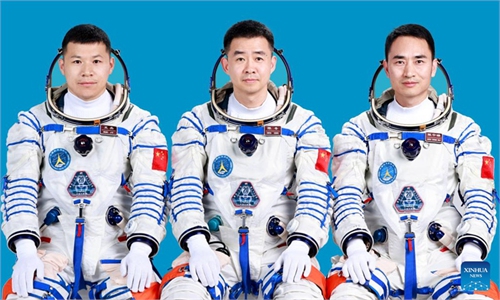

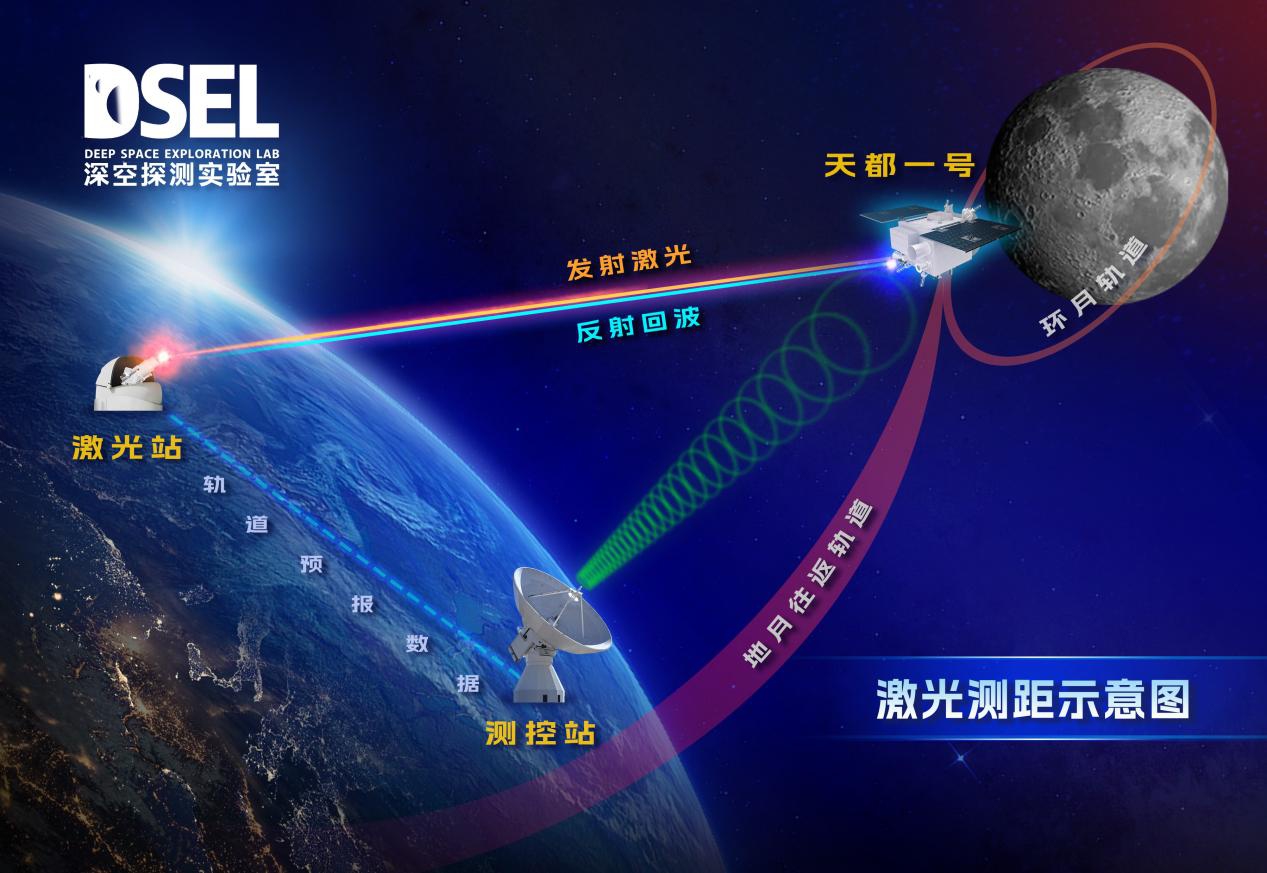

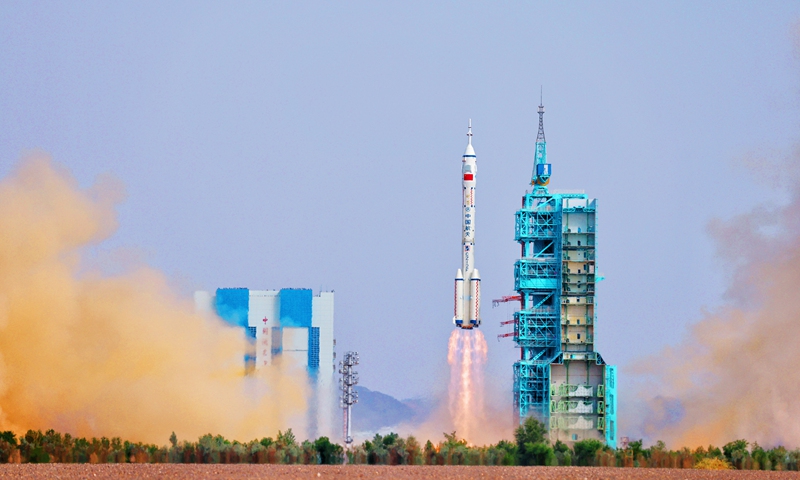




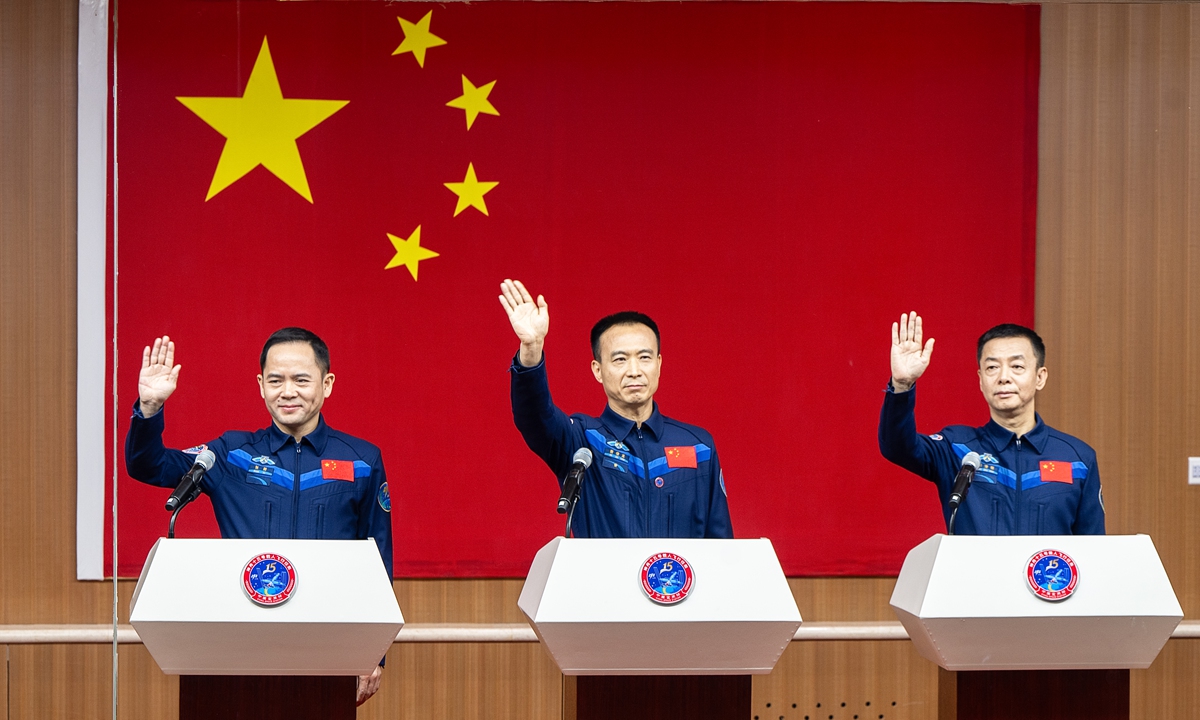 The line-up of three taikonauts for Shenzhou-15 manned spaceflight mission, Zhang Lu, Fei Junlong, and Deng Qingming (from left to right). Photo: VCG
China on Monday unveiled the line-up of three taikonauts for Shenzhou-15 manned spaceflight mission that is set to be launched on Tuesday night. The trio led by mission commander Fei Junlong with two space newcomers Deng Qingming and Zhang Lu are going to conduct a direct handover in orbit with the Shenzhou-14 crew at the China Space Station in construction, which shall mark a first in China's aerospace history.
The upcoming Shenzhou-15 crewed spaceflight mission is not only the anchor-leg launch mission at the China Space Station construction stage, but also is the first one to embark on the next operational stage, Fei, the 57-year-old veteran taikonaut who visited the space as the mission commander in the China's Shenzhou-6 mission in 2005, remarked at a press conference on Monday at the Jiuquan Satellite Space Launch Center in Northwest China's Gansu Province.
The crew will carry out more experiments in orbit, operate, maintain and repair relevant equipment and above all execute even more challenging extravehicular activities, or known as spacewalks, with more complicated paths to take on, Fei said on Monday.
The Shenzhou-15 crew has undergone great amount of specific training, which made them very confident to deliver all the set goals and to successfully complete their space run, Fei said.
Deng Qingming, 56, is among the first batch of taikonauts trained in China that includes the country's first astronaut Yang Liwei and also his mission commander Fei in the Shenzhou-15 mission. He has served as a backup for nearly 25 years, in missions such as the Shenzhou-9 and 10, but never got the chance to fly. This will be his first time ever in space.
Zhang Lu, 46, also a new face, was selected in the second batch of taikonauts trained in China in 2010.
Mission insiders told the Global Times on Monday that the two crews of six taikonauts will carry out the space station handover in a face-to-face manner for the first time in the country's manned space history and that is not only of symbolic significance but also carries great practical values to the overall development of the country's first permanent space outpost.
Sources with China's astronaut training system, told the Global Times on Monday that such feat would enable the predecessor Shenzhou-14 to introduce and share what their work and life would be like inside the space station with the new Shenzhou-15 crew directly, boosting the continuity and efficiency of the handover.
It would also help save the resources to set the space station combo from occupied state to unoccupied one and then back again. And the handover will be more target-oriented, especially for those ongoing experiments and space station maintenance work, the sources said.
Having six taikonauts simultaneously onboard the China Space Station in construction, would also verify its performance under the full load condition, which would lay groundwork for future tasks where more payload technicians are needed for more complicated experiments, Song Zhongping, a space watcher and TV commentator, told the Global Times.
By plan, the handover will last for a week or so, and after that, Shenzhou-14 crew will return to the Dongfeng landing site on Earth.
As the temperature drops to somewhere near minus 20 C in Jiuquan around this time of the year, the launch of Shenzhou-15, which is via a Long March-2F rocket from the Jiuquan center, also faces a special challenge of extremely low temperature.
According to the China Academy of Launch Vehicle Technology (CALT), the developer of the Long March-2F rocket, Shenzhou spacecraft had only been launched twice in unscrewed condition during the Shenzhou-1 and 4 missions in late November. Shenzhou-15 would be first one to be carried out with taikonauts onboard in the cold weather.
However, the CALT explained that they have taken such unique challenge into consideration. They have also confirmed the two sets of the temperature system inside the rocket's nose cone, to make sure that the temperature of the propellant of the return and propelling module meets the launch condition.
The line-up of three taikonauts for Shenzhou-15 manned spaceflight mission, Zhang Lu, Fei Junlong, and Deng Qingming (from left to right). Photo: VCG
China on Monday unveiled the line-up of three taikonauts for Shenzhou-15 manned spaceflight mission that is set to be launched on Tuesday night. The trio led by mission commander Fei Junlong with two space newcomers Deng Qingming and Zhang Lu are going to conduct a direct handover in orbit with the Shenzhou-14 crew at the China Space Station in construction, which shall mark a first in China's aerospace history.
The upcoming Shenzhou-15 crewed spaceflight mission is not only the anchor-leg launch mission at the China Space Station construction stage, but also is the first one to embark on the next operational stage, Fei, the 57-year-old veteran taikonaut who visited the space as the mission commander in the China's Shenzhou-6 mission in 2005, remarked at a press conference on Monday at the Jiuquan Satellite Space Launch Center in Northwest China's Gansu Province.
The crew will carry out more experiments in orbit, operate, maintain and repair relevant equipment and above all execute even more challenging extravehicular activities, or known as spacewalks, with more complicated paths to take on, Fei said on Monday.
The Shenzhou-15 crew has undergone great amount of specific training, which made them very confident to deliver all the set goals and to successfully complete their space run, Fei said.
Deng Qingming, 56, is among the first batch of taikonauts trained in China that includes the country's first astronaut Yang Liwei and also his mission commander Fei in the Shenzhou-15 mission. He has served as a backup for nearly 25 years, in missions such as the Shenzhou-9 and 10, but never got the chance to fly. This will be his first time ever in space.
Zhang Lu, 46, also a new face, was selected in the second batch of taikonauts trained in China in 2010.
Mission insiders told the Global Times on Monday that the two crews of six taikonauts will carry out the space station handover in a face-to-face manner for the first time in the country's manned space history and that is not only of symbolic significance but also carries great practical values to the overall development of the country's first permanent space outpost.
Sources with China's astronaut training system, told the Global Times on Monday that such feat would enable the predecessor Shenzhou-14 to introduce and share what their work and life would be like inside the space station with the new Shenzhou-15 crew directly, boosting the continuity and efficiency of the handover.
It would also help save the resources to set the space station combo from occupied state to unoccupied one and then back again. And the handover will be more target-oriented, especially for those ongoing experiments and space station maintenance work, the sources said.
Having six taikonauts simultaneously onboard the China Space Station in construction, would also verify its performance under the full load condition, which would lay groundwork for future tasks where more payload technicians are needed for more complicated experiments, Song Zhongping, a space watcher and TV commentator, told the Global Times.
By plan, the handover will last for a week or so, and after that, Shenzhou-14 crew will return to the Dongfeng landing site on Earth.
As the temperature drops to somewhere near minus 20 C in Jiuquan around this time of the year, the launch of Shenzhou-15, which is via a Long March-2F rocket from the Jiuquan center, also faces a special challenge of extremely low temperature.
According to the China Academy of Launch Vehicle Technology (CALT), the developer of the Long March-2F rocket, Shenzhou spacecraft had only been launched twice in unscrewed condition during the Shenzhou-1 and 4 missions in late November. Shenzhou-15 would be first one to be carried out with taikonauts onboard in the cold weather.
However, the CALT explained that they have taken such unique challenge into consideration. They have also confirmed the two sets of the temperature system inside the rocket's nose cone, to make sure that the temperature of the propellant of the return and propelling module meets the launch condition.
